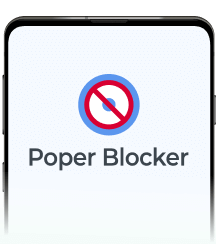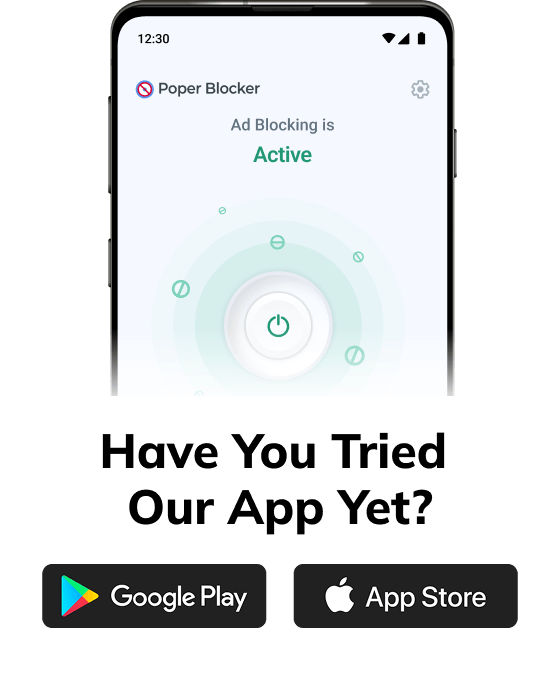What Is a Digital Footprint?
A digital footprint is similar to a virtual shadow, cast by the trail of data we leave online. It encompasses every interaction, transaction, and activity you engage in on the internet.
From social media posts and comments to online shopping habits and website visits, each action contributes to this ever-growing repository of personal data. This trail is not just a record of online activities; it’s a reflection of your personal and professional persona in the virtual world.
Check out these startling data:
- A significant 86% of individuals in the US have made efforts to remove or reduce their digital footprint on the internet (source: DataProt)
- A survey involving 2,000 individuals reveals that an average person shares 36% of their life online, content that remains accessible, potentially for decades after their passing (source: StudyFinds)
This footprint can impact privacy, security, and even job prospects. How can you effectively erase it?
The Challenge of Leaving No Trace Online
Today’s online environment ensures that our actions leave a lasting mark. Every tweet, every photo upload, and every online comment becomes a part of this footprint, painting a picture of who you are to anyone who might search for you online.
For those concerned about privacy and security, managing this footprint is essential. This guide provides a comprehensive approach to reducing your online presence, with a special focus on the Poper Blocker browser extension, a vital tool in this process.
Benefits of Having a Clean Digital Footprint
Enhanced Online Privacy
A clean digital footprint significantly boosts your online privacy. By limiting the information available about you online, you reduce the risk of identity theft and cyber fraud. This careful management of personal data ensures that sensitive information remains secure from unauthorized access.
Positive Professional Impression
Your online presence often serves as the first impression for potential employers. A clean digital footprint, devoid of inappropriate content, can enhance your job prospects. It reflects a professional image, increasing your attractiveness as a candidate and potentially opening doors to new career opportunities.
Improved Mental Well-being
Maintaining a minimal digital footprint can lead to better mental health. It alleviates the stress and anxiety associated with constant online exposure and social media pressures. This approach fosters a healthier balance between your digital interactions and real-life experiences, contributing to overall well-being.
Control Over Personal Narrative
A well-managed digital footprint allows you to control how you are perceived online. It ensures that the information available is current, accurate, and truly reflective of your present self. This control is crucial in shaping your personal and professional identity in a way that aligns with your goals and values.
Can Our Digital Footprint Really Be Removed?
Completely erasing your online presence is a daunting task, but significant reduction and management are achievable goals. Proactive and consistent efforts are key to maintaining a minimal digital footprint. Regularly reviewing and managing your online data helps keep your online presence under control.
How to Remove Your Digital Footprint
Managing your online presence effectively requires a strategic approach. Here’s a detailed breakdown of each step on how to erase your internet footprint:
1. Find Places You Are Mentioned Online
The first step in controlling your online footprint is to understand its current state. Conduct a thorough search of your name on various search engines. This will reveal where your information is publicly available, be it on:
- Social media platforms
- Forums
- Other websites
Pay close attention to the information displayed and note down the URLs where your personal data appears. This step is crucial for identifying areas that need attention.
2. Delete and Deactivate Social and Any Other Accounts You Opened Online
Over the years, you likely have created accounts on various platforms that you no longer use. These dormant accounts can be a source of personal data leakage. To remove digital footprints, start by listing all the accounts you remember creating, then use your email to search for sign-up confirmations or welcome messages for any you might have forgotten.
Once identified, visit each site and follow the process to deactivate or delete your account. Remember, deactivation might not remove your data permanently, so opt for deletion where possible.
3. Adjust Your Browser’s Privacy Settings
Your web browser is a gateway to your online activities, and it often collects a significant amount of information about you. Adjusting your browser’s privacy settings is a critical step in minimizing and erasing your digital footprint.
On Chrome, enable ‘Do Not Track’ requests, disable third-party cookies, and regularly clear your browsing history and cache. Consider using privacy-focused browsers or extensions that offer enhanced features to protect your privacy online.
4. Ask Google to Remove Search Results About You (Right to Be Forgotten)
When pondering the question “what does Google know about me?”, you might be astonished at the extent of information it holds, especially evident when you search for yourself online. In certain regions, you possess the legal right to ask for the removal of your personal data from search engine results, a privilege commonly referred to as the Right to be Forgotten.
If outdated or irrelevant information about you appears in search results, you can file a request with the search engine provider to have it removed. While this process doesn’t erase the information from the internet, it makes it less accessible.
To request the removal of specific search results associated with your name from Google, you need to complete the Personal Data Removal Request Form. Here’s what you should include in your request:
- URL(s) of the Content: List the exact URL(s) of the content you wish to have removed from Google’s search results.
- Content Description and Relation to You: Provide a detailed explanation of the content at each URL and how it pertains to you. Explain why this content should be removed from Google’s search listings.
- Specific Search Query: Mention the search term, such as your full name, under which this content appears. If applicable, you can also request the removal of content that appears under alternate names or nicknames.
- Contact Email Address: Include an email address where Google can contact you for any follow-up or clarification regarding your request.
5. Manage the Location Settings on Your Phone
Smartphones constantly collect and transmit location data. To minimize this aspect of your digital footprint, scrutinize the location settings on your phone. Review the permissions for each app and disable location access for those that don’t need it to function. Also, consider turning off location services when they are not in use.
6. Use a VPN
A Virtual Private Network (VPN) is a powerful tool for maintaining anonymity online. It masks your IP address and encrypts your internet connection, making your online activities more private. Use a VPN whenever you are online, especially when connected to public Wi-Fi networks, to protect your data from prying eyes.
Read More: Do VPNs Block Ads?
7. Block Trackers via Poper Blocker
Trackers collect data about your online behavior, compromising your privacy. Poper Blocker can protect your privacy with its tracker blocker feature. This not only enhances your privacy but also contributes to faster website loading times.
To activate this feature, open Poper Blocker, go to Advanced Settings, and enable “Stop sites from tracking you.”
8. Block Cookie Consent Messages with Poper Blocker
Websites use various types of cookies to track your online activities and preferences. Poper Blocker can automatically block cookie consent popups and reject access to cookies, further safeguarding your online privacy.
To use this cookie-blocking feature, open Poper Blocker, navigate to Advanced Settings, and turn on “Hide cookie requests.”
9. Block Ads and Pop-Ups Using Poper Blocker
Ads and pop-ups are not only annoying but can also be a source of web tracking and malware. Poper Blocker efficiently blocks these ad-tracking tactics, enhancing both your privacy and browsing experience. It has the power to block pop-ups, which can be in basic and advanced forms.
To activate this ad blocker feature, open the app, click on Advanced Settings, and enable “Block basic popups” and “Block advanced popups (overlays)” for comprehensive protection.
Erase your tracks online – Make Poper Blocker your browsing partner
Mastering Your Digital Footprint: A Final Word
Managing your digital footprint is an ongoing process that demands vigilance and proactive steps. By regularly auditing your online presence, utilizing tools like Poper Blocker, and being mindful of your online activities, you can significantly reduce your footprint. This not only safeguards your personal information but also shapes how you are perceived in the virtual world.
Remember: The key to a secure online experience lies in your hands. Every action you take towards minimizing your digital footprint is a step towards a safer, more private online life. Take control of your online narrative today, ensuring it reflects the best version of yourself.
Reduce your online footprint effortlessly – Poper Blocker is the solution
FAQs
What is the impact of a digital footprint on personal security?
Your digital footprint can significantly impact your personal security. Every piece of information you leave online can potentially be accessed by cybercriminals. This data can be used for identity theft, phishing scams, or even physical threats. By managing your digital footprint, you reduce the risk of your personal information being misused.
How often should I audit my digital footprint?
Regular audits of your digital footprint are crucial. Ideally, conduct a thorough check every three to six months. This includes reviewing your social media posts, checking privacy settings, and ensuring that no sensitive personal information is publicly available. Frequent audits help you stay on top of any changes and address potential privacy concerns promptly.
Can deleting social media posts retroactively improve my digital footprint?
Yes, deleting old social media posts can positively impact your digital footprint. It helps in removing outdated or potentially harmful content that doesn’t represent your current views or status. However, remember that some content might have been shared or saved by others, so it’s best to be cautious about what you post online from the start.
What are the risks of not managing my digital footprint?
Neglecting your digital footprint can lead to several risks, including compromised privacy, increased susceptibility to cyberattacks, and potential damage to your reputation. Unmanaged footprints can also affect your professional opportunities, as many employers review online profiles as part of their hiring process.
How effective are browser extensions like Poper Blocker in maintaining digital privacy?
Browser extensions like Poper Blocker play a significant role in enhancing digital privacy. They help by blocking unwanted ads, preventing trackers from monitoring your online activities, and automatically rejecting cookie requests. These features contribute to minimizing your online presence and protecting your personal data from being collected and misused.
Start your journey to digital anonymity – Install Poper Blocker now


